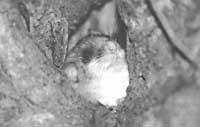The Great North Ear, as Strange as Unknown
1992/06/01 Aihartza, Joxerra Iturria: Elhuyar aldizkaria

As in other areas, when we begin to learn about the mammals that live in our environment, we usually study those who, due to their abundance and ecological influence, form groups of greater importance.
For this reason, most fans know perfectly the ungulates of our territory, as well as the ways of life and customs of the cannids, felines, mustelids and other mammals, but at the same time, the micromammals – insectivores and rodents – that are the most numerous groups of the class, and bats are the ones we know least in general. The latter, classified in the order of the chiroptera, are the only mammals capable of actively flying, and although they are more than 900 species worldwide, their origin, evolution and general biology remain largely unknown.
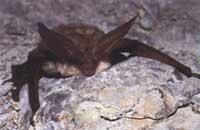
In the cultures that surround us, bats have always been related to witches, tragedies and all kinds of ferments, so that still today people are still afraid, or at least sucks through these curious little animals. But these feelings are totally absurd. And it is that these small mammals, by their insectoral nature, make us merely beneficial, and on the other hand, if they have the opportunity to study their activities and their way of life, they can offer us great pleasure.
The Great Northern Ear (Plecotus auritus) is one of the most outstanding bats in Euskal Herria, since, as its name suggests, it has magnificent and curious ears. On the other hand, the large Arabic ear is a medium-sized bat, with a width of fins of about 25 cm and a length between the head and body trunk of 4,1-5,1 cm. The tail, 3,4-5 cm, is long and its weight varies between 5.5 and 14.4 g depending on the size of the animal and the number of years. As for its coloring, it has a light brown dorsal area and a whitish belly. As for the fin or membrane yard, it is wide and its tail is long and the uropatagio, which is between the legs and the tail, is noted in flight.
However, and as already mentioned, the ears are the most representative characteristic of this species. These are large structures, almost as long as the trunk, and are formed by transparent membranes with numerous transverse folds. At the front of each ear, on the other hand, it has a long and narrow structure known as a drink, each of which has half the length of the ear.
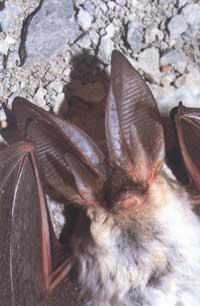
As for the specific biology of the Great North Coat, little can be said of the common characteristic of bats. As mentioned earlier, the lifestyle and ecology of the species of this order remain quite unknown. In any case, and like most microcircopes, the Great North Ear is an insectivore that makes a nightlife. During the day it is kept hanging head-on logs, cameras or other shelters. However, half an hour before sunset, and due to some kind of “indoor stopwatch”, the great north ear wakes up and goes hunting.
As is known, bats, due to their poor vision, usually use an ultrasound plaster, both to hunt and to fly in the dark without any edge, but their capacity is not the same in all groups. As for the great northern ear, this seems to be the one that has the most capacity of hatching in the family of the bespertilionids, thanks to the existence of large ears and drink.
In the case of this bat, and as in other species, ultrasound is ejected through the nostrils. In this way, and so that the animal can use the same system while eating, the larynx reaches directly to the narins, without joining the mouth in the throat. On the other hand, the nostrils of the northern orifice are oriented backwards, so that when it emits ultrasound they first reach the ears, which uses them as “screen” or “amplifier”. On the other hand, the ears also make “screen” to receive sounds, while the drink acts as a fingerboard, better collecting these sounds.
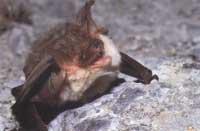
Each acoustic signal has an approximate duration of 2ms and the tone drops during emission. In addition, the frequency of sounds can vary according to needs: it usually emits about 10 sounds per second, but as it approaches a piece or object it can increase the frequency by emitting 200 sounds per second.
Through this system, the great north ear accurately achieves everything in a radius of up to 4 or 5 m, without the need for vision. And he uses the same technique to hunt the insects he needs to meet his metabolic needs. It seems that the most common hunting pieces of the Great North Ear are medium-sized lepidoptera, as well as some other coleopterus. During the hunt, these invertebrates are captured first with their sharp teeth and then, if they are large they are collected in the uropatagio, before stopping and swallowing in some support.
As for the life cycle of the Great North Ear, zeal begins in autumn, in which the compulas are also produced, but gestation does not begin until spring. Until hibernation the female does not develop eggs, so the sperm will remain in the reproductive ducts of the female until spring. Therefore, when the cold arrives, the large ears, like the rest of bats from temperate regions, are forced to hibernate, among other things because at this time there are no insects and no food.
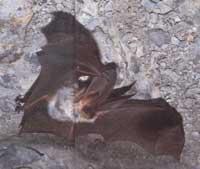
Therefore, when environmental conditions require it, the great north ear seeks a cave or chasm to winter, which is usually performed individually or in pairs, hanging from a wall, in direction, with large ears wrapped against the body. However, the hibernation of the Great North Ear is not usually total, but can be awakened and displaced periodically, and some authors claim that coplas are also produced in winter.
However, with the arrival of spring there is ovulation of the female and its fertilization. The duration of gestation can vary between 5 and 6 months depending on the climate, and after that time it can cover one or two offspring. These, for their part, take about 5 months to breastfeed their mother and will achieve their sexual maturity for the second year. It is evident, therefore, that large Nordic ears, like the rest of bats, are animals with low reproduction rate.
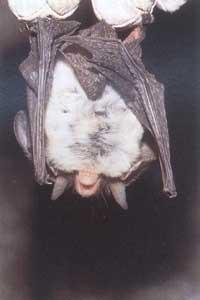
The question of the habitats that the Great North Ear chooses as a residence is not very clear. According to some authors, this bat chooses areas of great vegetation, forests, to live, while others consider that it chooses mostly clean places. On the contrary, we have found ourselves at 2,200 m altitude in the Pyrenees wintering in a cave (therefore in the area of forest area).
As for its distribution, the Great North Coat is a species found throughout western Europe, except in northern Scandinavia. Visible on the Iberian peninsula in the Cantabrian, Galicia, Pyrenees, Iberian Chain and Eastern Cordillera. Unfortunately in Euskal Herria there has not been much work done on the chiropooptera, so the data are very scarce. In any case, they have been seen in Álava, Bizkaia and Gipuzkoa, and in Navarra and Iparralde, without a doubt.
Technical information: North Coat |
SPECIES: Plecotus auritus Family: BESPERTILIONIDS ORDER: SURGICAL INSTRUMENTS CLASS: MAMMALS |

Gai honi buruzko eduki gehiago
Elhuyarrek garatutako teknologia




